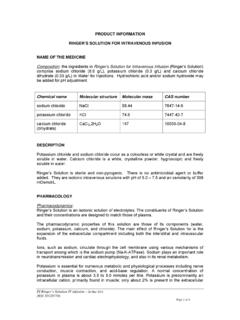Transcription of PRODUCT INFORMATION SODIUM CHLORIDE (0.9%) …
1 SODIUM CHLORIDE (AVIVA)_22 Oct 2013 1 PRODUCT INFORMATION SODIUM CHLORIDE ( ) INTRAVENOUS INFUSION in AVIVA Plastic Container Name of the medicine SODIUM CHLORIDE Composition The active ingredient is SODIUM CHLORIDE formulated in Water for Injections. The chemical name is SODIUM CHLORIDE with molecular formula NaCl. It occurs as a colourless or white crystal and is freely soluble in water and practically insoluble in anhydrous ethanol. Chemical Structure: NaCl; MW = CAS: 7647-14-5 Description The SODIUM CHLORIDE ( ) Intravenous Infusion preparations are clear, colourless, practically free from visible particles, sterile and non-pyrogenic solutions.
2 The concentrations of the active ingredients dissolved in a litre of Water for Injections are shown in Table 1 (see Presentation). They do not contain an antimicrobial agent or added buffer. However, during the sterilisation step a small amount of hydrochloric acid may leach out resulting in a slightly acidic solution with a pH of SODIUM CHLORIDE ( ) solutions are isotonic as indicated by their osmolarity shown in Table 1. Pharmacology Mechanism of Action: SODIUM is the major cation of extracellular fluid and functions principally in the control of water distribution, fluid and electrolyte balance and osmotic pressure of body fluids.
3 CHLORIDE , the major extracellular anion, closely follows the physiological disposition of SODIUM cation in maintenance of acid-base balance, isotonicity and electrodynamic characteristic of the cells. Thus, SODIUM CHLORIDE ( ) Intravenous Infusion has a value as a source of water and electrolytes. Pharmacokinetics As the SODIUM CHLORIDE ( ) Intravenous Infusion is directly administered to the systemic circulation by infusion, the bioavailability (absorption) of the active components is complete (100 per cent). SODIUM CHLORIDE (AVIVA)_22 Oct 2013 2 Indications Normal saline can be used as the vehicle for many parenteral drugs and as an electrolyte replenisher for maintenance or replacement of deficits in extracellular fluid.
4 It can also be used as a sterile irrigation medium. Contraindications The use of SODIUM CHLORIDE ( ) Intravenous Infusion requires careful evaluation of risks and benefits by the attending physician. It must not be used in the following conditions unless the physician has determined that potential benefits outweigh risks: congestive heart failure severe impairment of renal function, clinical states in which there exists oedema with SODIUM retention. liver cirrhosis irrigation during electrosurgical procedures See Precautions. Precautions The safety of the AVIVA plastic bag container has been shown in tests with animals according to the USP biological tests for plastic container, as well by tissue culture toxicity studies.
5 In a dilute condition, osmolarity/L is approximately the same as osmolality/kg General Clinical evaluation and appropriate laboratory determinations are essential to monitor renal function, changes in fluid balance, electrolyte concentration and acid-base balance. SODIUM CHLORIDE ( ) Intravenous Infusion may cause fluid and/or solute overload resulting in overhydration/hypervolemia and, for example, congested states, including central and peripheral edema. The risk of dilutional states is inversely proportional to the electrolyte concentrations of the injections. The risk of solute overload causing congested states with peripheral and pulmonary oedema is directly proportional to the electrolyte concentration administered.
6 Clinical evaluation and periodic laboratory determinations may be necessary to monitor changes in fluid balance, electrolyte concentrations, and acid-base balance during prolonged parenteral therapy or whenever the condition of the patient or the rate of administration warrants such evaluation. Thus, caution should be exercised in patients with hypertension, heart failure, cerebral oedema, renal disease, pulmonary or peripheral oedema, pre-eclampsia, liver cirrhosis, conditions associated with SODIUM retention, and in geriatric patients, and infants. SODIUM CHLORIDE ( ) Intravenous Infusion should be used with caution in patients receiving corticosteroids or corticotropin, because of potential SODIUM retention.
7 Given that there is a possibility of systematic absorption of irrigation solutions, the same precautions apply. Displaced catheters or drainage tubes can lead to irrigation or infiltration of unintended structures or cavities. Excessive volume or pressure during irrigation of closed cavities may result in distention of tissues. SODIUM CHLORIDE (AVIVA)_22 Oct 2013 3 SODIUM CHLORIDE Intravenous Infusion should be used with particular caution, if at all, in patients with or at risk for Hypernatraemia, Hyperchloraemia, Hypervolemia and conditions that may cause SODIUM retention, fluid overload and edema (central and peripheral).
8 Its use may result in electrolyte abnormalities, including hypokalaemia and hyperkalaemia. See Adverse Reactions and Overdosage. Rapid correction of hyponatraemia and hypernatraemia is potentially dangerous. SODIUM CHLORIDE Intravenous Infusion should be used with caution in patients receiving corticosteroids or corticotropin, because of potential SODIUM and fluid retention. Hypersensitivity/infusion reactions, including hypotension, pyrexia, tremor, chills, urticaria, rash, and pruritus, have been reported. Stop the infusion immediately if signs or symptoms of hypersensitivity/infusion reactions develop.
9 Appropriate therapeutic countermeasures must be instituted as clinically indicated. Carcinogenicity/mutagenicity Studies with SODIUM CHLORIDE have not been performed to evaluate carcinogenic or mutagenic potential. Use in pregnancy (Category A) There are no adequate and well-controlled studies of SODIUM CHLORIDE ( ) Intravenous Infusion in animals or in pregnant women. However, SODIUM CHLORIDE ( ) Intravenous Infusion contains no components known to have adverse effects on the foetus at physiological concentrations. Physicians should carefully consider the potential risks and benefits for each specific patient before administering SODIUM CHLORIDE .
10 Use in lactation Following intravenous administration, a fraction of SODIUM and CHLORIDE ions is expected to be excreted into human milk. However, at physiological concentrations, neither of these ions is known to have adverse effects on a breastfeeding baby. Physicians should carefully consider the potential risks and benefits for each specific patient before administering SODIUM CHLORIDE . Paediatric use Safety and effectiveness of SODIUM CHLORIDE ( ) in paediatric patients have not been established by adequate or controlled trials. In paediatric use, doses are calculated for each patient based on clinical condition, including body weight, and laboratory data.
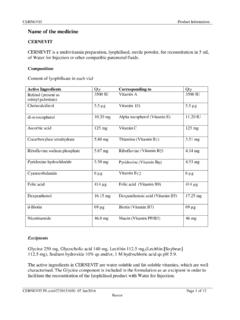
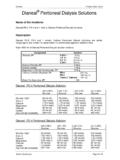
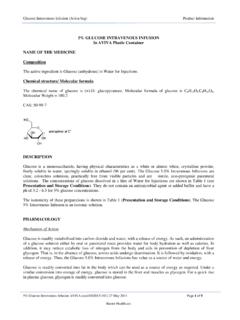


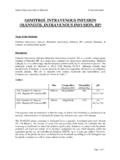
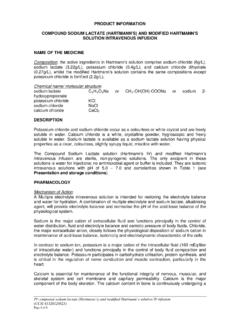
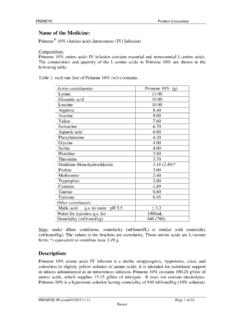
![T I S S E E L [Fibrin Sealant] - Baxter Healthcare](/cache/preview/5/e/c/8/3/b/b/2/thumb-5ec83bb2d349410260af6c556ae67fe3.jpg)
